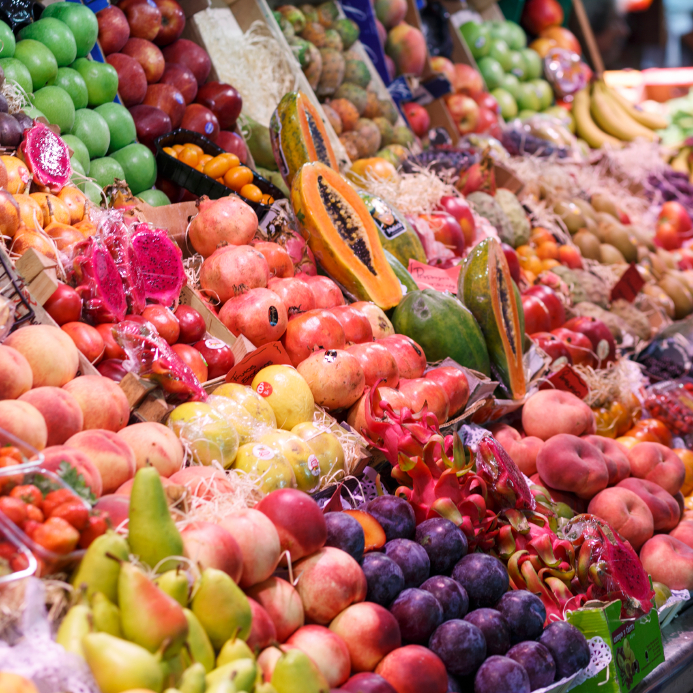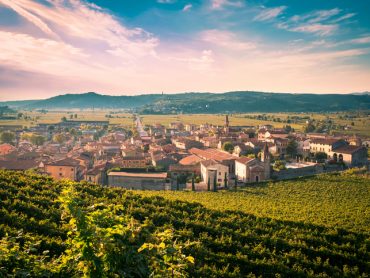Indigenous Foods: The Pinnacle of Locavore
A decade ago, the locavore movement was still an emerging trend, saved mostly for niche artisanal shoppes and ultra-posh restaurants with four-digit price tags. Heck, even the portmanteau ‘locavore’ was seldom understood or recognized by readers. Now, though, if your restaurant isn’t sourcing locally (at least in some capacity), you might as well lump yourself into the fast casual dining category. The times, they are a-changin’…and they’re a-changin’ fast!
Furthermore, now that it’s 2015, local ingredient sourcing is no longer perceived as a value-add; it’s become an expectation for guests of all ages and dispositions. And we’ve done this to ourselves, after all. With restaurants the world over using some iteration of ‘Locally Sourced’ as part of their marketing efforts to usurp the competition, consumers have become numb to the terminology. In other words, basic locavore tactics by themselves no longer impress guests enough to generate that vital word of mouth nor are they a clear point of differentiation.
Before you misinterpret, know that I’m not advocating you to abandon the practice of local sourcing. It’s a noble pursuit and one that all restaurants should aspire to have in place. Rather, it’s time we beef up your locavore crusade so that you can continue to wow guests and give them an exceptional dining experience that they will remember long after the meal is complete. With this as a goal, let’s discuss implementing an ‘indigenous’ F&B program.
Defining Indigenous Foods
If you want to take your locavore efforts to the next level, consider infusing the menu with flora and fauna that are indigenous to the area – that is, foods that have been naturally thriving in the local ecosystem before the artificial interloping of humankind. Also called ‘Forest to Table’ as a comparative term to ‘Farm to Table’, I prefer the label ‘indigenous’ because many of us don’t live in or near woodland regions. I suppose if you ran a seafood joint, the term ‘Ocean to Table’ would be an easy substitute, and along those lines ‘Field to Table’ and ‘Sand to Table’ might also apply. As delivering an ‘authentic local guest experience’ is all the rage these days, what is more authentically local than the species that have dwelled and evolved in the region for eons?
To successfully craft cuisine that fits this profile, a serious upgrade to your food knowledge is essential as you have five millennia of agricultural terraforming to contend with. Take tomatoes for instance. A staple to the culinary traditions of numerous Old World cultures, lest you forget that they didn’t exist outside of Mesoamerica prior to the arrival of Hernán Cortés and the start of the Columbian Exchange. In fact, the Italian for tomato – pomodoro – translates back to English as ‘golden apple’, alluding to the marketing verbiage that Renaissance merchants used to sell these erstwhile exotic, little red, and often yellow, fruits.
The same goes for corn, potatoes, sweet potatoes, zucchini, squash, bell peppers, chilis, cashews, peanuts and numerous others – all of which were domesticated by Central and South American peoples prior to the arrival of the conquistadors. Likewise, most domesticated animals (and countless other vegetables and fruits for that matter) originate from the Old World, thus disqualifying them from indigenous status for any eatery in the Americas. Furthermore, the ‘Old World’ denotes Europe, Africa and all of Asia – a blanket term, in other words. This means that, for example, unless your property is situated within the Fertile Crescent, you’d be making a very bold claim by saying that your bread or pasta is indigenous.
As you might have already guessed, designing an entire menu of indigenous foods, no matter your locale, would be more restrictive than that for a paleo raw vegan dietary regimen. Hence, this is not what I recommend. Instead, consider indigenous foods as featured and seasonal selections. For starters, think native fish species, local fowl, big game, regional herbs, indigenous berries or wild mushrooms (please consult a mycologist as many wild fungi are poisonous) – using such ingredients either as the centerpiece or as a conspicuous infusion to another entrée. And then, as a more audacious extension of this concept, put a single dish on the menu that is exclusively indigenous. At the very least, it’ll certainly make for a good talking point to enhance the dining experience, regardless of whether it is ordered or not.
Selling Indigenous Foods
Indigenous eating isn’t for everyone. They are hard to consistently source. They might not be within budget to attain. As mostly undomesticated species, they may be difficult to prepare. Consumers may not be accustomed to their flavor profiles and find them displeasing. Others may be too intimidated to order the item off the menu. And some may even take offensive to the use of the word ‘indigenous’ (another reason why ‘Forest to Table’ is in the mix).
However, we now find ourselves in an era of rapid food evolution with the awakening of adventurous palates the world over, all of them ready to try new cuisines as a vehicle for entertainment, braggadocio, self-discovery or personal expression. The locavore movement is in vogue right now and your efforts to this end won’t go unnoticed, especially if you have a unique angle to highlight.
What I stress is that you weave your indigenous ingredients into your overall property or restaurant narrative, whether this is expressed via a blurb on the menu, a javascripted popup on the website or additional training for your servers so that they can communicate this point of differentiation directly (this method is preferable if you plan to use this tactic for daily specials). For example, you might use a local fowl on the menu as a point of entry to describe aspects of the region’s history, touching on interesting factoids about native species, what the environment looked like prior to the arrival of civilization, any fascinating cultural traditions before the bleaching of modern consumerism and so on. It’s not meant to be a college lecture, so keep it short and make it fun.
Another alternate to consider is to go native with your cuisine presentation. There aren’t too many options in this camp, but that doesn’t mean they can’t make an impact. For instance, local might pertain to serving a butternut squash soup in a locally produced mason jar, whereas indigenous would mean presenting charcuterie on a board made from a tree that calls the region its natural home.
Indigenous Versus Invasive
While indigenous food sourcing is on the rise, many restaurateurs are headed the opposite direction. Instead of targeting the species native to the region for consumption, they are going after those that have been artificially introduced and are running amok due to a lack of natural predators. While not directly falling under the banner of ‘authentically’ local, the rationale behind this movement is sound: by training consumers to select and eat invasive species, we are protecting our ecosystems from irreversible damage and allowing indigenous species to thrive.
This is not to say that supporting indigenous eating makes you an environmental persona non grata. Often is the case where by supporting native pedigrees – especially endangered ones – you are preventing them from being pushed out by more economically viable species. Two notable examples here include the heirloom Chopee okra, native to South Carolina but is rapidly being usurped by its African mainstay, and amaranth, indigenous to Mexico but is being pushed out in favor of other more common grains.
Invasive ingredients aren’t without problems of their own either. While ruminating on invasive eating, I’m constantly reminded of my zany Australian relatives who insisted that I shoot all rabbits on site – a pest on the continent and certainly a viable candidate for this locavore sub-trend once they figure out their vaccination issues. If only the Aussies could find a way to neutralize the toxins in cane toads then they’d be good as gold. Hitting a little closer to home, I once had zebra mussels and I can politely tell you that there’s definitely a reason why they aren’t a sought-after dish at the neighborhood seafood shack, or at least it isn’t an entrée you’d want to consume without a generous dose of aioli. Ditto for Asian carp – hard to debone, harder still on the palate.
Even with these drawbacks, through trial and errors as well as a little bravado from the executive chef, you will find something that works. And the marketing bonus will come via the fact that you are helping the local environment, not just the local economy as most other locavore adopters are currently doing.
Conclusion
Whether you go with indigenous or invasive, the underlying message is that you need to innovate your F&B offerings in order to continue to draw the big crowds. These are exciting times for culinary evolution and for the hospitality industry to become true leaders in this regard. Be bold with your cuisine and the marketing, the buzz, the word of mouth and the revenues will follow.
(Article by Larry Mogelonsky, published in Hotel Executive on August 24, 2015)




